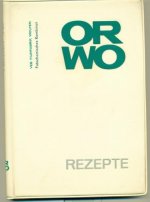tho60
Well-known
own recipes-Orwo cookbook
own recipes-Orwo cookbook
In addition, you can mix the solution you want and do not depend on manufacturer's will. I have purchased the ORWO cookbook from 1968 and I will try some recipes. However, brewing too much developers might lead to confusion. To avoid this, you should use/storage maximum 3 developers at once.
own recipes-Orwo cookbook
I agree with the poster above that once you have a stock of chemicals you don't run out. That makes it much more convenient than ordering pre-packaged. No special tools needed. I use a cheap pocket scale and mix in a plastic measuring cup. I buy the distilled water from the grocery store because the chemicals seem to keep better than with my well water.
I'm mostly using D-76 but when I was printing I liked to mix D-52 for warmtone papers. That one hasn't been made for years.
Mike
In addition, you can mix the solution you want and do not depend on manufacturer's will. I have purchased the ORWO cookbook from 1968 and I will try some recipes. However, brewing too much developers might lead to confusion. To avoid this, you should use/storage maximum 3 developers at once.


